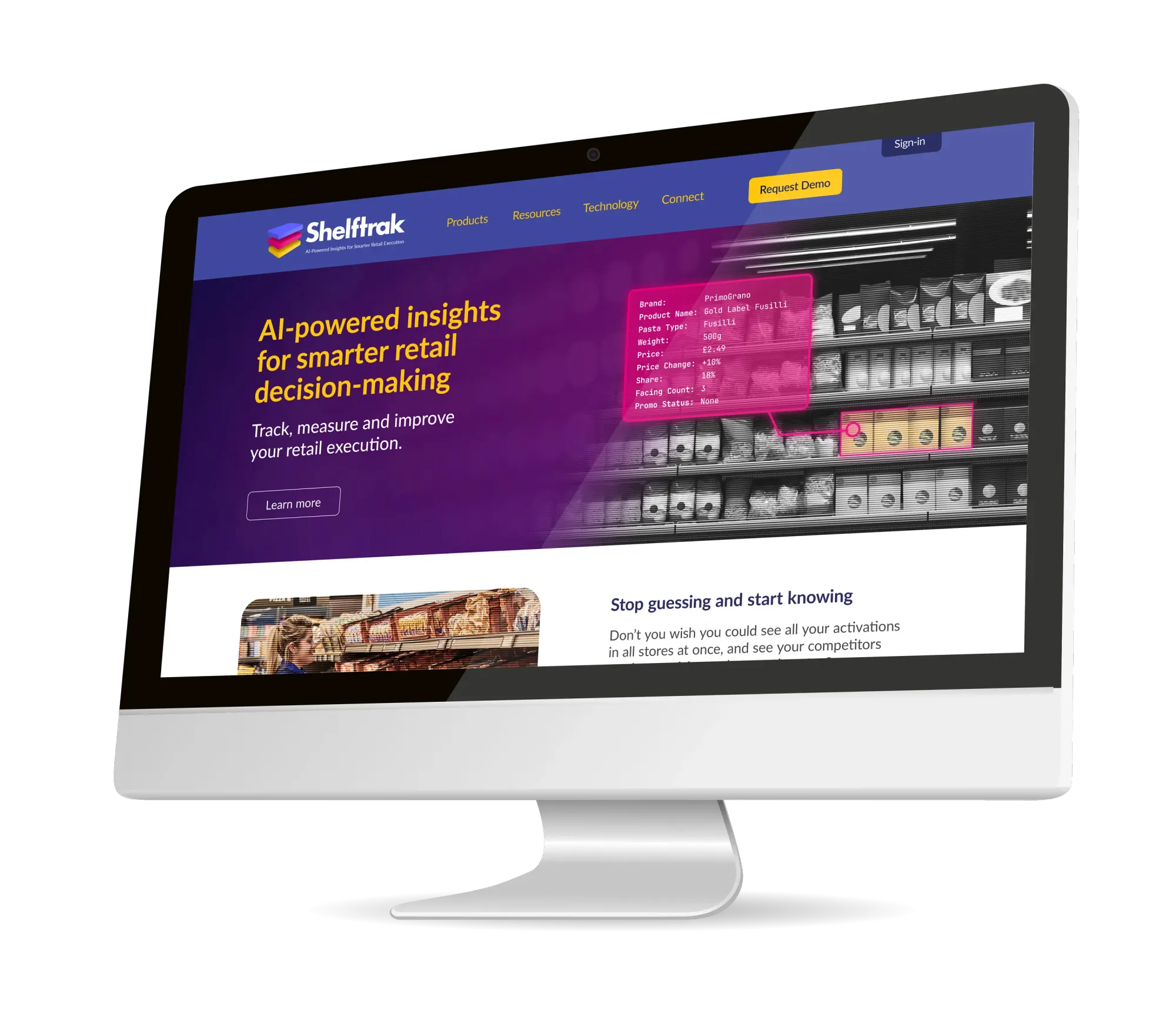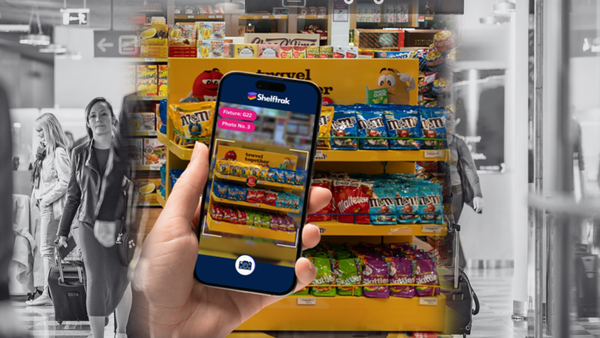Travel Retail Displays: Capturing the Time-Poor Shopper
Empty shelves, missing promotions; these execution failures erode travel retail profits. Uncover the hidden costs of poor shelf execution and how to prevent revenue from slipping away.

Travellers move quickly through duty‑free shops, often with minutes to spare. For brands, the challenge is simple: you have only seconds to grab their attention and convert a sale. In this article, we explore the importance of retail displays in influencing travel retail customers, and how flawless execution ensures every opportunity is captured.
How Customers are Influenced by Retail Displays
In any retail setting, a well-crafted display can make the difference between a passerby and a purchaser. This is especially true in travel retail, where many purchases are unplanned. Research shows that a whopping 76% of purchase decisions are made in-store, and nearly 1 in 6 brand purchases happens when there’s a display for that brand present . That means travelers rushing through an airport duty-free are highly susceptible to what they see on the shelves and promotional fixtures. Bright, attractive arrangements draw the eye and can spark a spontaneous buy – a last-minute gift, an indulgent treat, or a premium upgrade the shopper didn’t initially intend.
The importance of retail displays goes beyond just aesthetics. A strong display tells a brand story in seconds. Imagine a cosmetics brand’s corner in a duty-free shop: if the signage is vivid, the products are neatly arranged by shade, and a promotional offer is clearly highlighted, a traveler might be enticed to stop and sample a product even if beauty wasn’t on their shopping list. On the other hand, if that same display is disorganized or missing the promotional sign due to poor execution, the chance to hook that customer diminishes greatly. In travel retail, you rarely get a second chance – by the time the mistake is noticed, that customer is already boarding their flight.
The High Stakes of Time-Poor Shoppers
Travel retail shoppers are the definition of time-poor. Many are trying to squeeze in a purchase before a flight boarding call. This creates a unique high-pressure sales environment: every glance and every minute count. Promotions in this channel need to be immediately impactful. If a new whisky promotion is running, the standee, banners, and stocked product must all be present and perfect from day one. According to industry studies, mismanaged promotions are rampant – 81% of retailers have seen campaigns not executed properly in stores . In an airport setting, such a lapse can mean tens of thousands in lost revenue in a single weekend, because an entire wave of international travelers missed seeing the promotion.
Most studies suggest passengers have under 30 minutes on average for airport shopping , which underscores just how little time brands have to make an impression. For example, let’s say a confectionery brand launches a “Buy 2 Get 1 Free” offer on chocolates across 20 airport stores. If even a few of those stores fail to put up the signage or the special display, hundreds of rushed travelers might never realize there’s a deal. Those who do see a well-executed display in other airports snap up the offer – demonstrating how execution directly drives sales. Retail execution in this context isn’t just about looking good; it’s about ensuring the marketing message actually reaches the customer under tight time constraints.
Ensuring Every Display Shines
Given these stakes, brands are increasingly investing in planogram compliance and display monitoring solutions to make sure nothing falls through the cracks. A modern approach is to treat every display as a data point that can be audited and improved. Using a mobile store compliance app or photo-driven audit, field teams or even store staff can validate that a display is set up correctly each day. Are the correct products on the gondola? Is the promotional poster in place? These checks, when done manually, used to be sporadic at best. But today, mobile retail audit apps enable instant verification. A quick photo can confirm whether the “New Arrivals” endcap at Heathrow Terminal 5 looks the same as the one at JFK.
Image recognition then kicks in to compare that photo against the planogram and promotional plan. If anything is amiss – say an item is out-of-stock or a shelf fixture is half-empty – alerts can be sent immediately. This proactive approach to in-store execution monitoring means that errors in display setup or maintenance can be fixed before they impact the bulk of that day’s shoppers. It’s a shift from reactive to proactive: instead of discovering in a month-end report that a key promotion underperformed, brands can pinpoint on day one if a store didn’t execute it properly and reach out to fix it.
Critically, this kind of execution tracking tool for brands not only helps catch mistakes but also collects data on performance. Over time, a brand can learn which types of displays resonate most with travel customers. Do eye-level product arrangements work better than bin displays? Does adding digital screens increase engagement? With consistent tracking, these insights emerge from the numbers.
“Within the first month, we used Shelftrak’s data to streamline our promotional displays, saving both time and operational costs.”
– Market Intelligence Lead, Global Consumer Goods Corporation
Quotes like the above, from industry leaders, underscore how optimizing displays is not just about sales uplift but also efficiency. When every store follows a unified plan and issues are spotted quickly, there’s less firefighting for regional managers and more time spent on enhancing the customer experience. A streamlined process ensures that local staff, too, understand the importance of maintaining those displays — they know someone is keeping score, and they take pride in hitting compliance targets.
Turning Browsers into Buyers
At its core, travel retail display execution is about converting fleeting attention into action. The right combination of enticing visuals and retail compliance ensures that a traveler who might have just been killing time is now walking away with a purchase. It’s the art and science of influence: art in the creative design of a display, and science in the consistent execution and measurement of its impact.
Brands that master this balance see tangible results. They gain competitive shelf intelligence – noticing, for instance, that whenever their brand has a secondary display, it outsells a competitor who doesn’t. They learn the patterns of traveler behavior: maybe duty-free shoppers are more drawn to bold signage that emphasizes exclusivity (“Travel Exclusive Edition”), or perhaps a well-lit product demo station yields more conversions than a static shelf.
In the end, capturing the time-pressed airport shopper requires orchestrating many elements flawlessly, and displays are center stage in that effort. When backed by data and vigilant monitoring, even a few seconds of attention can translate into a lasting customer.
Key Tips for Impactful Travel Retail Displays
- Clear, Bold Signage: Grab attention with simple messaging (e.g. “Exclusive Offer” or “Limited Edition”) that any traveler can quickly understand.
- Strategic Placement: Position displays in high-traffic zones or near complementary products to maximise visibility for rushing shoppers.
- Fully Stocked Shelves: Keep the fixture full. An under-stocked display not only loses sales but also risks appearing neglected.
- Consistent Branding: Ensure each display follows brand guidelines so a shopper sees a familiar, trusted look whether they’re in Heathrow or Singapore.
- Interactive Elements: When possible, add a sensory draw – a product sample station, a digital screen with a video, or unique lighting – to pique interest in seconds.
Conclusion: No Second Chances – Get It Right the First Time
Travel retail offers incredible opportunities for brand exposure and sales, but it also presents a one-shot scenario. There are no do-overs with customers who are literally on the move. The importance of retail displays in this arena cannot be overstated: they are often the first and only impression a traveler gets of a product. By leveraging technology for instant store audit capabilities and insisting on rigorous retail execution standards, brands ensure that their promotions and products are seen as intended.
The pain point of missed sales due to poor execution is entirely preventable. With tools like Shelftrak providing SKU-level retail analytics and real-time compliance checks, brands can finally guarantee that their hard-won airport slots and promotional campaigns are executed to perfection. In travel retail, where every minute matters, having that peace of mind – knowing every display in every terminal is doing its job – is priceless.
Don’t leave your travel retail success to chance
Shelftrak helps you monitor and optimise every display across your global duty-free footprint. Book a demo to see how our solution ensures you turn travelers’ heads – and capture their purchases – every time.






